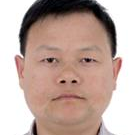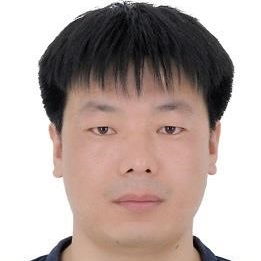Advanced Forming Process of Light Alloy
A special issue of Metals (ISSN 2075-4701). This special issue belongs to the section "Metal Casting, Forming and Heat Treatment".
Deadline for manuscript submissions: closed (20 April 2024) | Viewed by 2876
Special Issue Editors
Interests: high-performance metallic materials; advanced forming methods; precision fabrication of tube; plasticity theory; constitutive modeling; microstructure modeling; fracture modeling
Interests: light-weight metallic alloys; microstructure and texture optimization; material modeling; multi-scale modeling; crystal plasticity simulation; recrystallization mechanism; fracture modeling
Special Issues, Collections and Topics in MDPI journals
Special Issue Information
Dear Colleagues,
Light-weight alloys have played increasing important roles in modern industries, enabling sustainable development in an energy-saving and environmentally friendly way. In recent years, the use of light-weight alloys, including aluminum alloy, magnesium alloy, and titanium alloy, has achieved a certain degree of success for aerospace, automotive industry, or civil engineering applications. To satisfy the increasing demands for mechanical behavior and in-service performance (fatigue, creep and damping, etc.), advanced light-weight alloys have been developed. Generally, the high performance of these advanced light-weight alloys is realized via the control of grain structure and phases (or precipitations) via processing and forming methods.
Additionally, components with complex profiles are always needed to fulfill the designated structure function. In fact, the combination of advanced light-weight alloys and complex-shaped components is of great significance and high efficiency for further weight reduction and performance improvement, whereas inferior ductility and poor formability are usually found in advanced light-weight alloys due to the well-known trade off relationship between strength and ductility. Meanwhile, the complex shape of components further increases the difficulty in the forming process. Thus, the development and application of advanced metal-forming technology in light-weight alloys has become an essential research topic.
The current Special Issue aims to compile the recent developments in the field of advanced metal-forming technology and its application to light-weight alloys. The potential papers cover reviews of recent progress, understanding of microstructure and texture evolution during advanced processing and forming methods, the development of new forming technology, and the application of advanced forming technology to light-weight alloys.
Dr. Hongwu Song
Dr. Shuaifeng Chen
Guest Editors
Manuscript Submission Information
Manuscripts should be submitted online at www.mdpi.com by registering and logging in to this website. Once you are registered, click here to go to the submission form. Manuscripts can be submitted until the deadline. All submissions that pass pre-check are peer-reviewed. Accepted papers will be published continuously in the journal (as soon as accepted) and will be listed together on the special issue website. Research articles, review articles as well as short communications are invited. For planned papers, a title and short abstract (about 100 words) can be sent to the Editorial Office for announcement on this website.
Submitted manuscripts should not have been published previously, nor be under consideration for publication elsewhere (except conference proceedings papers). All manuscripts are thoroughly refereed through a single-blind peer-review process. A guide for authors and other relevant information for submission of manuscripts is available on the Instructions for Authors page. Metals is an international peer-reviewed open access monthly journal published by MDPI.
Please visit the Instructions for Authors page before submitting a manuscript. The Article Processing Charge (APC) for publication in this open access journal is 2600 CHF (Swiss Francs). Submitted papers should be well formatted and use good English. Authors may use MDPI's English editing service prior to publication or during author revisions.
Keywords
- light-weight alloys
- processing and forming technology
- microstructure and texture evolution
- multi-scale modeling
- constitutive model
- crystal plasticity simulation
- experiment characterization
- formability and fracture






